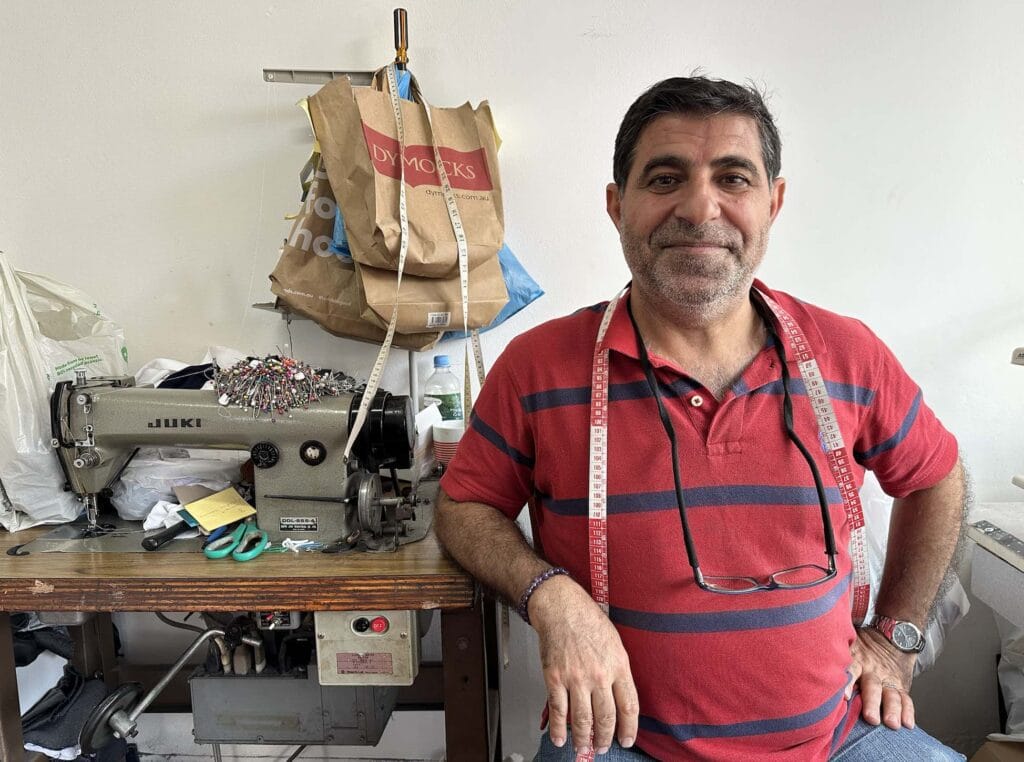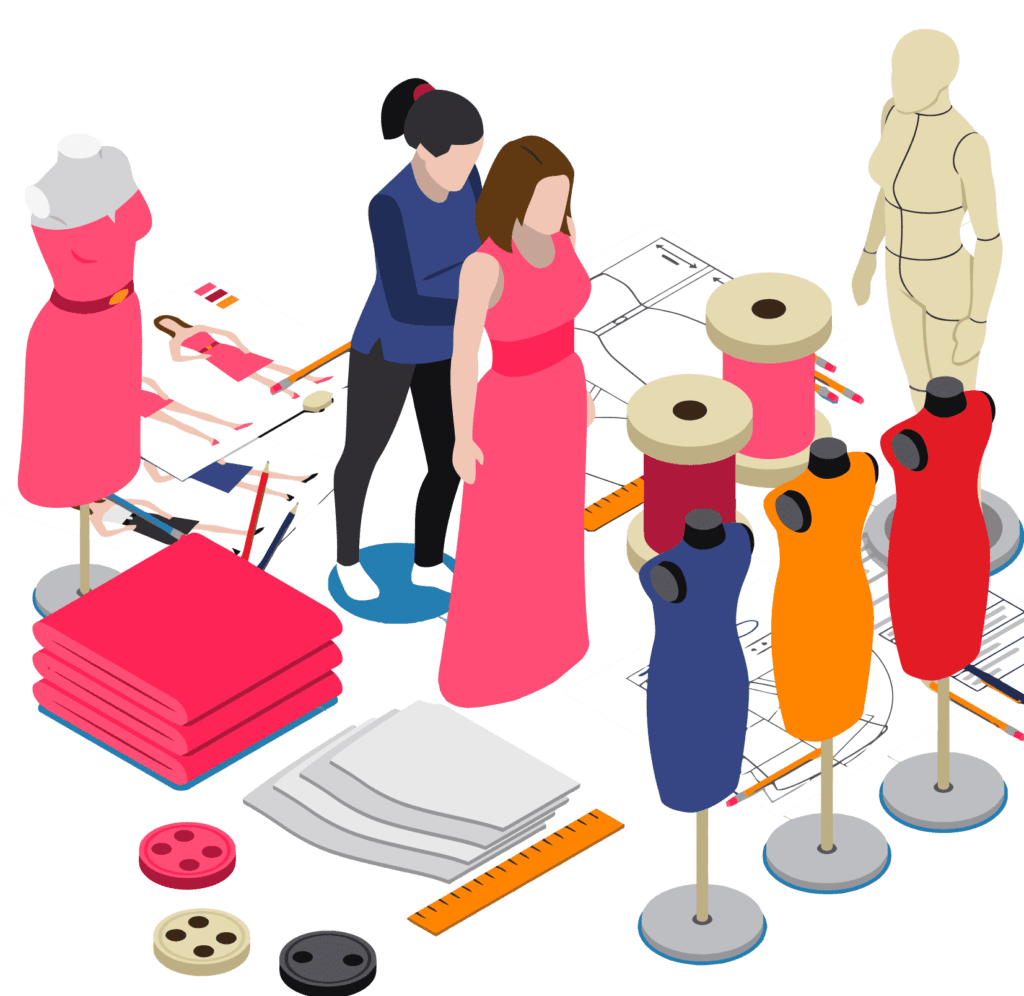Comprehending the Tailoring Process: From Textile Option to Final Suitable for the Perfect Closet
The customizing process is an intricate interaction of art and science, beginning with the critical choice of fabric option and culminating in the specific adjustments of last fittings. Each fabric type brings one-of-a-kind high qualities that affect not only the aesthetic allure but additionally the garment's long life and viability for different occasions. Understanding the subtleties of customizing methods can raise one's wardrobe to extraordinary degrees of class. As we check out these aspects further, one should take into consideration just how even the smallest information can significantly impact the overall end result of one's individual design.
Value of Textile Selection
Choosing the best textile is critical in the customizing procedure, as it straight influences the comfort, toughness, and general aesthetic of the last garment (tailor perth). The choice of textile sets the foundation for the garment's design, efficiency, and performance. Various fabrics possess one-of-a-kind homes, such as stretch, breathability, and weight, which can substantially impact exactly how the garment drapes and fits the body
In addition, textile option impacts the garment's durability and ease of treatment. High-grade materials can stand up to deterioration, keeping their look and structure over time, while lower-quality materials might lead to pilling or fading. In addition, the appropriate fabric contributes to the garment's capability to shift across celebrations and seasons, therefore improving adaptability.
A tailored item made from an appropriate textile not only showcases craftsmanship yet likewise boosts the user's confidence. Understanding the subtleties of textile selection is paramount for any customizing venture. It makes certain that the end product not just fulfills the visual needs of the client however additionally straightens with useful demands, thereby achieving an unified equilibrium in between type and function in the tailored wardrobe.
Kinds Of Fabrics and Their Uses
Comprehending the different sorts of textiles offered is crucial for making educated choices throughout the customizing process. Each textile possesses special attributes that determine its suitability for particular garments and events.
Cotton, recognized for its breathability and softness, is ideal for sportswear and summertime clothing. Its convenience enables it to be customized right into every little thing from t shirts to dresses. Woollen, on the various other hand, is favored for its warmth and structure, making it an outstanding option for formal suits and outerwear - tailor perth. Its natural flexibility helps garments maintain shape over time.
Silk shows high-end and is light-weight, making it perfect for eveningwear and fragile shirts; nonetheless, it calls for careful handling because of its fragility. Bed linen, with its textured surface, is a popular option for cozy environments, providing a crisp and ventilated feeling, however it wrinkles quickly, which may influence the garment's appearance.
Artificial textiles, such as polyester and nylon, offer toughness and resistance to creases, making them appropriate for day-to-day wear and active garments. Recognizing these fabric kinds and their homes enables better decision-making, making sure that each tailored piece not just fits well yet additionally straightens with the designated objective and event.
The Tailoring Techniques Described
The art of customizing relies upon a selection of methods that change fabric right into well-fitted garments. Central to this process is pattern drafting, where a tailor produces templates based on the client's measurements and wanted design. This preliminary step makes certain that the garment will fit the wearer effectively before any kind of reducing occurs.
When patterns are established, reducing methods come into play. Accuracy is paramount as inaccuracies can cause misfitting garments. Tailors typically utilize various reducing approaches, such as single-layer cutting for intricate layouts and multiple-layer cutting for efficiency on basic patterns.
Basting is an additional important technique, allowing tailors to temporarily sew fabric assemble for a preliminary fitting. This technique provides the chance to assess the drape and total shape before final sewing.
Seaming strategies, consisting of french seams and flat-felled seams, improve the garment's longevity and aesthetic allure. Tailors likewise use strategies such as interfacing and padding to give structure and shape to details locations, like collars and shoulders.
Finally, finishing strategies, including hemming and edge finishing, guarantee the garment's longevity while providing a sleek look. Together, these methods develop the backbone of effective customizing, resulting in beautiful, tailor-made apparel.
Fitting Changes and Factors To Consider

Key factors to consider include the shoulder fit, which ought to neither sag nor restrict activity, learn the facts here now and the sleeve size, which ought to permit for comfortable arm motion while maintaining a refined look. Additionally, modifications at the waist can fine-tune the shape, with alternatives to allow out or absorb textile as needed.
The rise of trousers is an additional important factor; it should sit conveniently above the hips without causing pain, enabling ease of motion. Hemming sizes for both trousers and skirts should mirror the user's favored design go to website while respecting proportions.

Keeping Your Tailored Apparel
Constantly adhere to the treatment tag instructions, which might advise dry cleaning for delicate fabrics or device washing for even more resilient products. Prevent regular laundering, as this can wear down the textile and change the garment's form.
Storage is just as essential; use padded hangers for coats and layers to maintain shoulder structure, and store trousers folded neatly or hung to avoid creasing. Safeguard garments from straight sunlight, which can discolor shades and damage fibers.
Furthermore, periodic examinations for minor repairs can protect against bigger problems. Inspect for loosened buttons, tearing joints, or indications of moth damages, dealing with these issues promptly to maintain the garment's honesty.
Last but not least, consider seasonal turning. Putting on customized pieces in small amounts permits materials to recover, prolonging their life-span. By executing these maintenance methods, you can make certain that your customized garments stay as beautiful as the day you first used them, enhancing your ideal wardrobe for years to find.
Conclusion
The tailoring process, including material choice, proficient strategies, and specific suitable changes, plays an important function in producing garments that improve both convenience check out this site and style. Comprehending the value of maintenance prolongs the life of tailored garments, solidifying their worth in a well-curated closet.
Picking the appropriate textile is vital in the customizing process, as it directly influences the convenience, durability, and total visual of the last garment. The choice of fabric sets the structure for the garment's performance, capability, and style. Different textiles have distinct buildings, such as breathability, weight, and stretch, which can considerably influence exactly how the garment drapes and fits the body.
The art of tailoring counts on a range of techniques that change material right into well-fitted garments.The tailoring procedure, including fabric option, competent techniques, and exact fitting changes, plays a critical function in creating garments that improve both comfort and style.